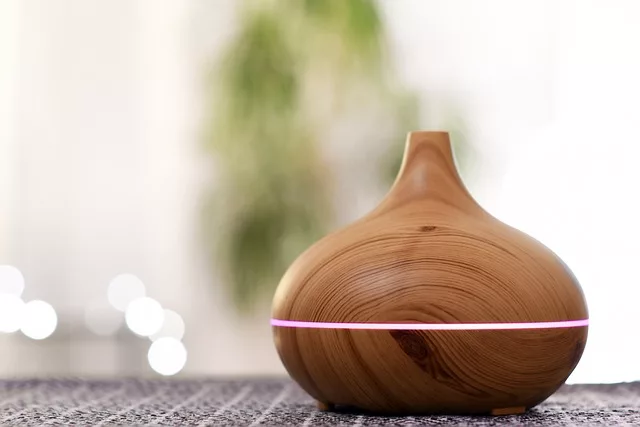Pain is a common ailment that affects people of all ages and backgrounds. Whether it’s from an injury, chronic condition, or simply the aches and pains of daily life, pain can be debilitating and interfere with our ability to perform everyday tasks. While traditional pain medications can be effective, they often come with unwanted side effects. Aromatherapy and essential oils offer a natural and effective alternative for managing pain.
In this article, we’ll explore the best essential oils for pain and how to use them. Here are the best essential oils for pain:
Peppermint Oil
Peppermint oil is a popular essential oil for pain relief. It contains menthol, which has a cooling effect that can help to soothe sore muscles and reduce inflammation. Peppermint oil is particularly effective for headaches, migraines, and menstrual cramps.
Lavender Oil
Lavender oil is known for its calming and relaxing properties, making it a great essential oil for managing pain associated with stress and anxiety. It can also be effective for reducing pain and inflammation in muscles and joints.
Eucalyptus Oil
Eucalyptus oil is a powerful anti-inflammatory and analgesic, making it a great essential oil for managing pain associated with arthritis and other inflammatory conditions. It can also be effective for easing muscle and joint pain.
Ginger Oil
Ginger oil is a natural anti-inflammatory and analgesic that can be effective for managing pain associated with arthritis, muscle pain, and menstrual cramps. It can also be helpful for reducing nausea and vomiting.
Frankincense Oil
Frankincense oil is a powerful anti-inflammatory and can be effective for managing pain associated with arthritis and other inflammatory conditions. It can also be helpful for reducing stress and anxiety, which can exacerbate pain.
Rosemary Oil
Rosemary oil is a natural analgesic and can be effective for managing pain associated with headaches, migraines, and menstrual cramps. It can also be helpful for reducing inflammation in muscles and joints.
Chamomile Oil
Chamomile oil is a natural anti-inflammatory and can be effective for managing pain associated with arthritis and other inflammatory conditions. It can also be helpful for reducing stress and anxiety, which can exacerbate pain.
How to Use Essential Oils for Pain
There are several ways to use essential oils for pain relief, including:
- Topical Application: Essential oils can be added to a carrier oil, such as coconut oil or jojoba oil, and applied directly to the skin. This is a great way to target specific areas of pain, such as sore muscles or joints. Simply mix a few drops of the essential oil with a carrier oil and apply to the affected area.
- Massage: Adding essential oils to a massage oil or lotion can be an effective way to manage pain. Massage can help to increase circulation and promote relaxation, which can reduce pain and inflammation. Simply mix a few drops of the essential oil with a carrier oil and massage into the skin.
- Inhalation: Inhalation is another effective way to use essential oils for pain relief. Add a few drops of the essential oil to a diffuser or a bowl of hot water and inhale the steam. This can be particularly effective for managing pain associated with headaches and migraines.
- Bath: Adding essential oils to a warm bath can be a relaxing and effective way to manage pain. The warm water helps to increase circulation and the essential oils can help to soothe sore muscles and reduce inflammation. Simply add a few drops of the essential oil to a warm bath and soak for 15-20 minutes.
- Compress: A warm or cold compress can be an effective way to manage pain. Simply add a few drops of essential oil to a bowl of warm water. Soak a clean cloth in the mixture, wring out the excess water, and then apply the cloth to the affected area. This method can be particularly helpful for relieving pain in specific areas such as joint pain or menstrual cramps.
Conclusion
Aromatherapy can be a natural and effective way to manage pain. Essential oils can help to alleviate pain and inflammation associated with various conditions. While essential oils are generally safe, it is important to use them properly and to consult with a healthcare professional before using them as a treatment for pain.
When using essential oils, it is important to follow safety guidelines and dilute them properly before applying them to the skin. It is also important to note that essential oils are not a substitute for medical treatment, and individuals should always seek medical attention for serious or persistent pain.
Incorporating aromatherapy into a pain management plan can be a beneficial way to complement traditional medical treatments and promote overall well-being.
Image by saponifier from Pixabay
Aromatherapy
-

Use Essential Oils to Transform Your Laundry
Laundry is a routine task that can be transformed into a delightful experience with the addition of essential oils. These natural aromatic extracts not only infuse your clothes and linens with a pleasant scent but also offer additional benefits such as freshness and relaxation. Let’s explore three essential oils that are perfect for laundry, when…









Leave a Reply